 |
 |
 |
| |
Any Level of Detectable Viremia is Associated with Serious Non-AIDS Events
|
| |
| |
We observed an association with LLV (51-199), HLV, VF and SNAEs with a graded hazard by level of viremia.
VLs were categorized as LLV [51-199 copies/mL], high level viremia [HLV-200-999 copies/mL], VF [≥200 copies/mL on 2 or more successive determinations or a single VL≥1000 copies/mL] and virologic suppression [VS- ≤50 copies/mL on all determinations and blips].
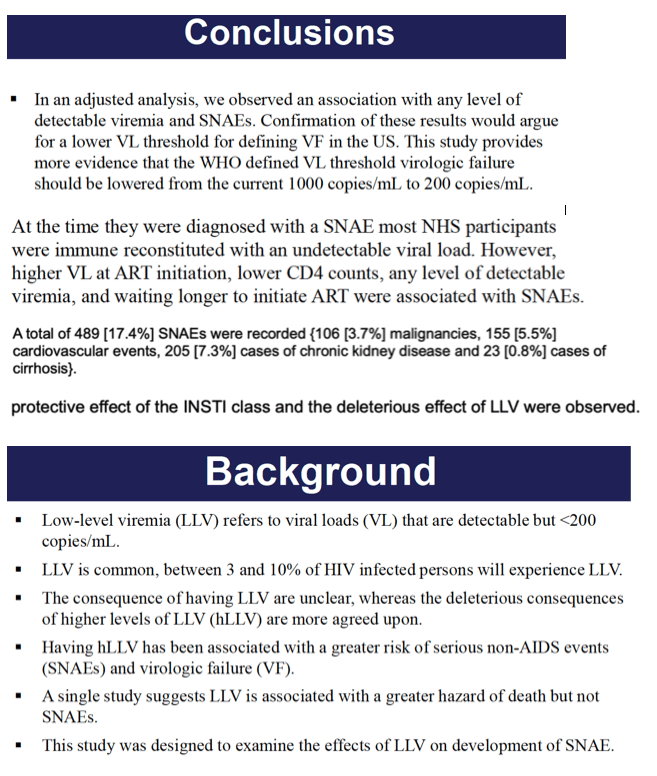
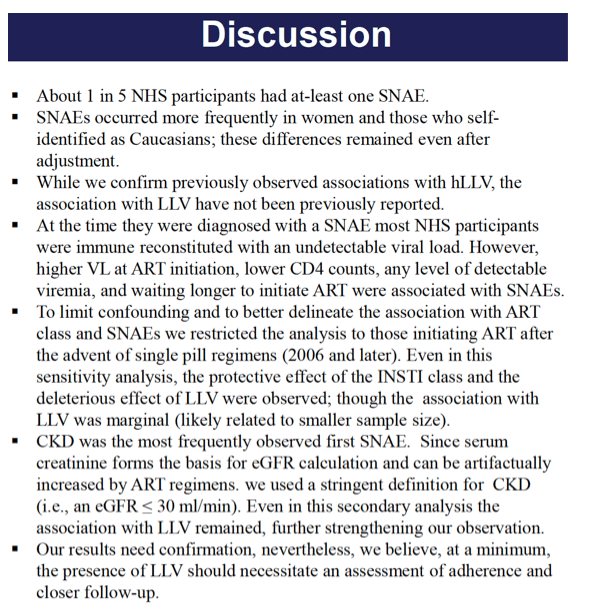
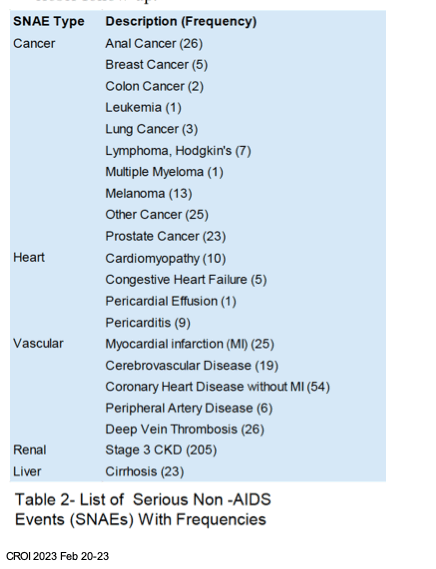
CROI 2023 Feb 20-23
Anuradha Ganesan, MBBS, MPH1,2,3 , Hsing-Chuan Hsieh MPH1,3, Xiuping Chu MS1,3, Rhonda E Colombo MD1,3,4, CDR Catherine Berjohn MD 1,5,
Tahaniyat Lalani MBBS 1,3,6, MHS, COL Jason Blaylock MD1,2, Col Jason Okulicz MD 1,7 and Brian Agan MD1,3
1- Infectious Disease Clinical Research Program, Department of Preventive Medicine and Biostatistics, Uniformed Services University of the Health Sciences, Bethesda, MD. 2 - Walter Reed
National Military Medical Center, Bethesda, MD 3- Henry M Jackson Foundation for the Advancement of Military Medicine, Inc., Bethesda, MD, 4- Madigan Army Medical Center, Tacoma, WA,
5-Naval Medical Center San Diego, San Diego, CA, 6- Naval Medical Center Portsmouth, Portsmouth, VA, 7- Brooke Army Medical Center, San Antonio, TX
VLs were categorized as LLV [51-199 copies/mL], high level viremia [HLV-200-999 copies/mL], VF [≥200 copies/mL on 2 or more successive determinations or a single VL≥1000 copies/mL] and virologic suppression [VS- ≤50 copies/mL on all determinations and blips].
Results: 2815 participants [94% male, 40% Caucasian, 43% African American] were followed for a median of 10.1 years [IQR 4.8 to 18.2]. A total of 489 [17.4%] SNAEs were recorded {106 [3.7%] malignancies, 155 [5.5%] cardiovascular events, 205 [7.3%] cases of chronic kidney disease and 23 [0.8%] cases of cirrhosis}. A third of the participants had one or more episodes of VF. LLV was noted in 7.9% and HLV in 4.3 %. We observed an association with LLV, HLV, VF and SNAEs with a graded hazard by level of viremia, Table 1. Other factors associated with SNAEs were older age, female gender, Caucasian race, delays in ART initiation and regimen type. In comparison with boosted PI, InSTIs and NNRTIs were protective, whereas unboosted PI use had a greater risk. Higher CD4 counts were protective.
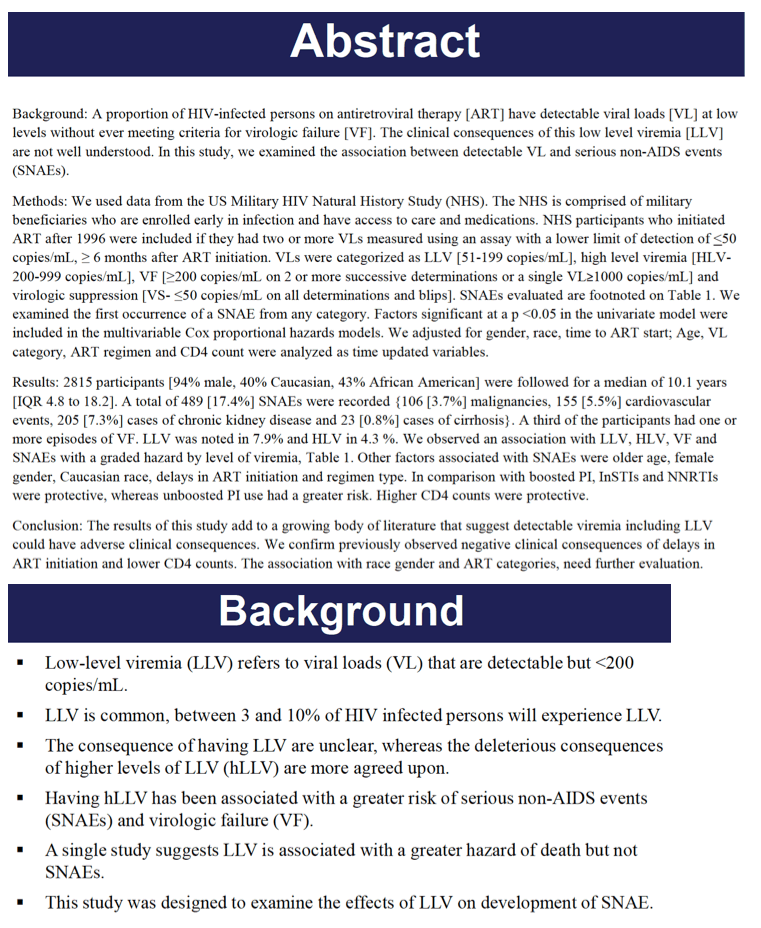
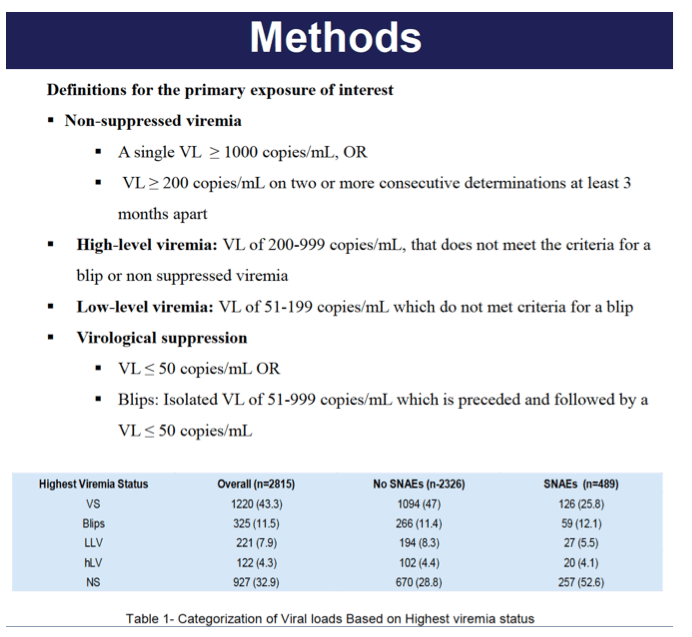
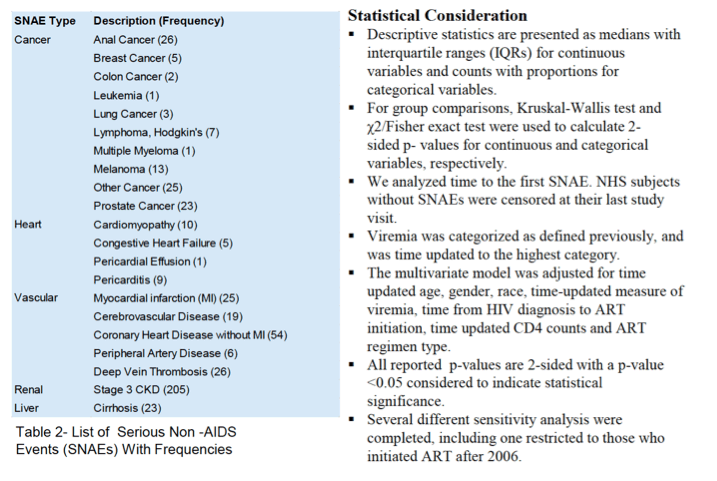
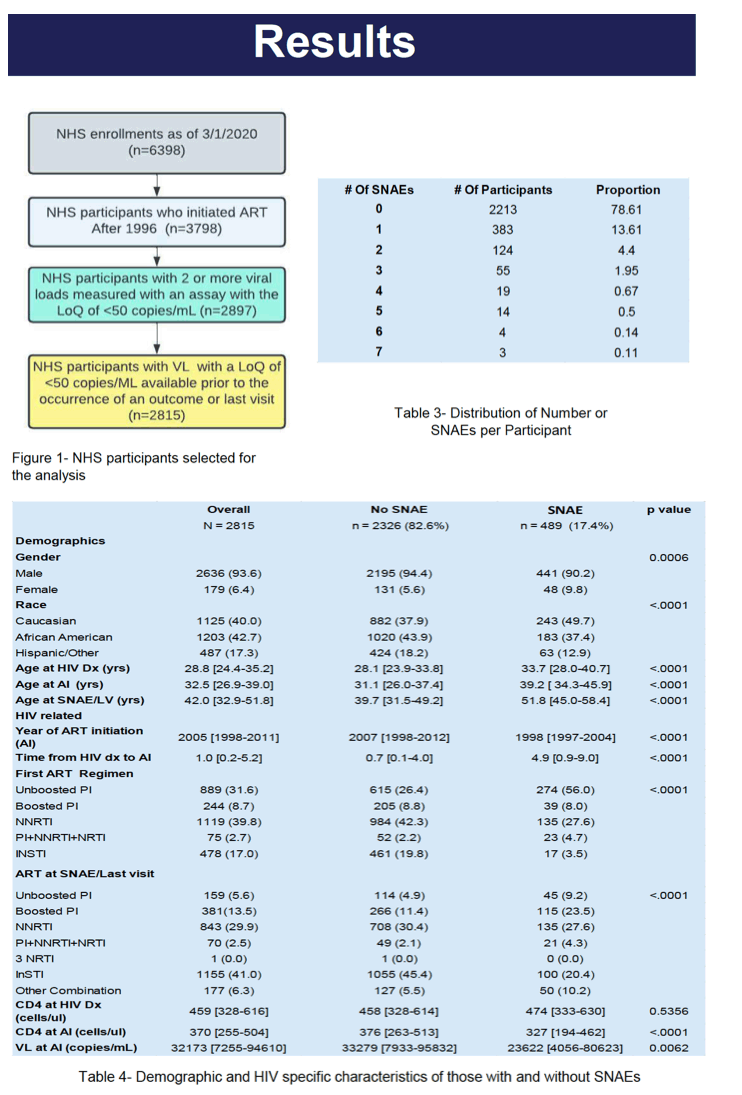
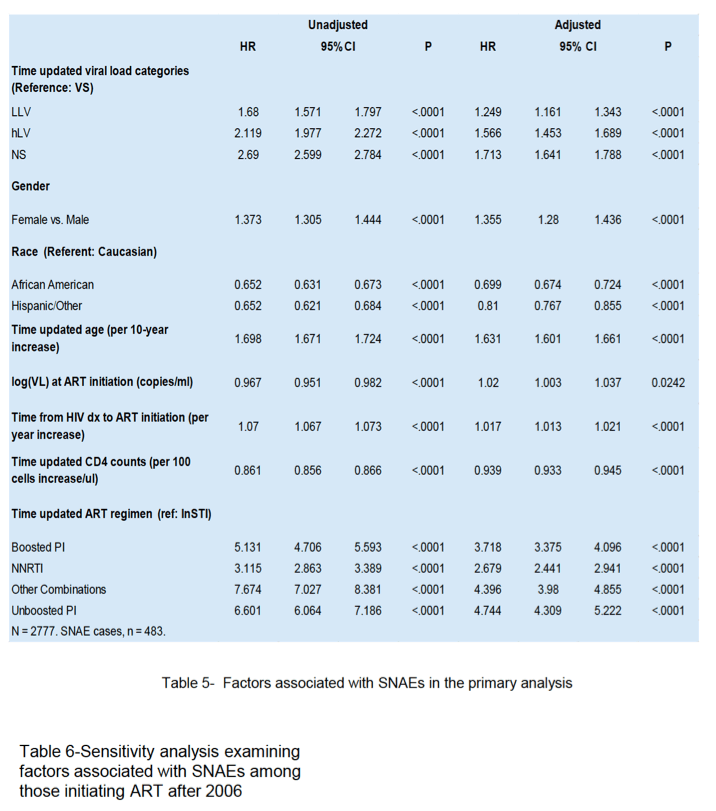
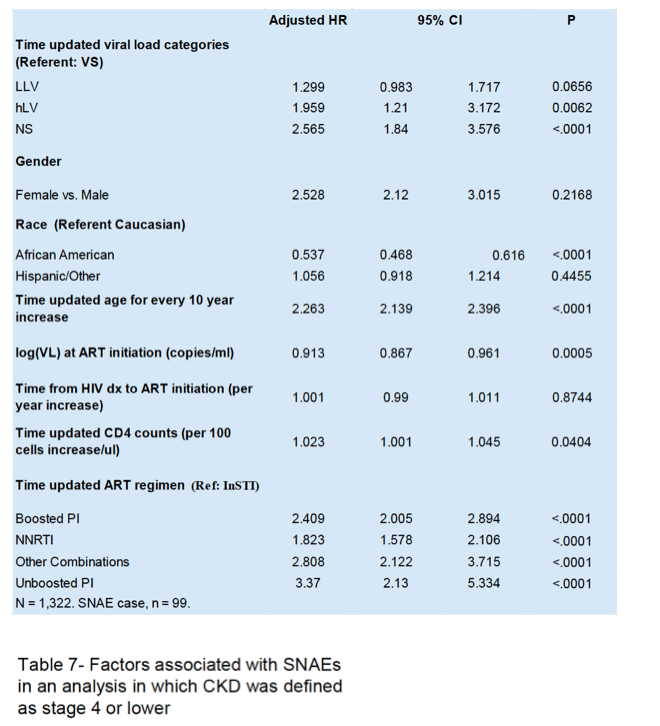
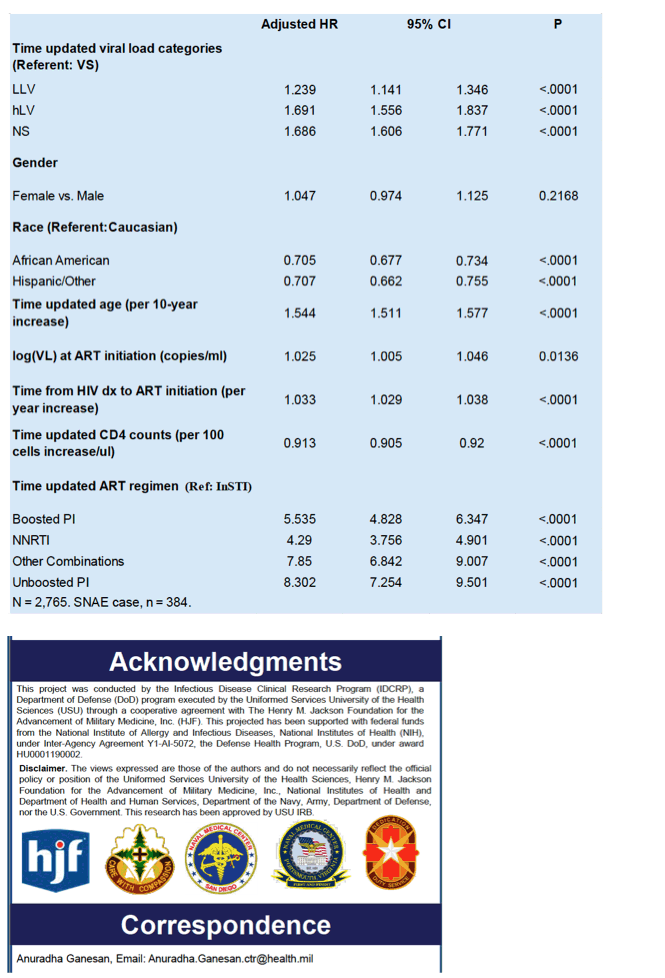
|
| |
|
 |
 |
|
|